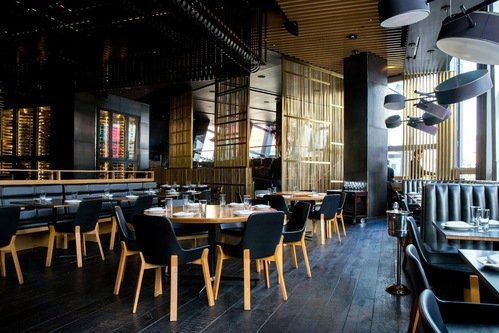Opening a new restaurant can be a daunting endeavor, filled with details that demand attention and a strategic approach. Whether it’s crafting a unique dining experience or ensuring the kitchen is equipped with the latest technology, each decision plays a critical role in the restaurant’s success. From concept to execution, aspiring restaurateurs must meticulously plan every aspect to create a memorable establishment. Below, we’ve compiled an essential checklist to help streamline the process and set the foundation for a thriving dining destination. Keep reading to ensure you have all the necessary ingredients for a successful launch.
Crafting Your Restaurant’s Identity and Brand
A strong restaurant brand goes beyond logos and color palettes; it reflects your vision, atmosphere, and the experience you want to create. From the name to staff uniforms, every detail should tell a story that connects with your audience and sets you apart.
Marketing plays a key role in building this identity. Use social media, community events, and a memorable grand opening to create buzz. Even small touches like artificial plants and tableware help bring your theme to life and ensure your brand feels consistent and memorable across every customer interaction.
Securing the Ideal Location and Layout Blueprint
The success of a restaurant depends heavily on its location, making visibility, accessibility, parking, foot traffic, and nearby attractions key factors in site selection. Once a spot is chosen, designing a functional layout is vital to ensure smooth operations and customer comfort.
Efficient kitchen setups can boost speed and minimize contamination risks, while floor plans should allow staff and diners to move freely, especially during busy periods. The design also influences ambiance, supporting various dining experiences such as intimate meals, family gatherings, or casual bar seating. Elements like lighting, acoustics, and decor shape the atmosphere. Compliance with local building codes and accessibility standards is essential to avoid delays and legal issues.
Equipping Your Kitchen with the Right Tools and Technology
A well-equipped kitchen is the backbone of any successful restaurant. Commercial-grade appliances ensure your team can keep up with demand, while proper refrigeration is essential for food safety and ingredient quality. For high-volume needs, investing in a Full ice maker 30 kg per 24 hours, helps maintain a steady ice supply for drinks and food prep.
Beyond equipment, smart technology like POS systems and inventory software streamlines operations and reduces waste. Safety remains a top priority. Install fire suppression systems, train staff on emergency procedures, and keep everything clean with easy-to-sanitize tools and surfaces.
Hiring and Training a Standout Restaurant Team
Hiring the right staff is crucial to your restaurant’s success, beginning with candidates who align with your brand and values. A balanced mix of experience and potential helps build a strong foundation. Once hired, comprehensive training ensures employees understand menu details and service standards, preparing them to represent the restaurant confidently.
Maintaining staff morale through fair treatment, recognition, and growth opportunities directly impacts customer satisfaction. A motivated team often delivers better service, driven by a positive work environment. Continuous training is essential in the fast-changing hospitality industry, helping staff stay current with new culinary techniques and evolving customer service trends, keeping your restaurant competitive and efficient.
Finalizing the Menu and Supply Chain Logistics
Crafting a restaurant menu requires balancing creativity with simplicity to ensure consistent quality while considering food costs, preparation time, and pricing for profitability. Ingredient sourcing plays a vital role, with local partnerships offering fresher products and showcasing a commitment to sustainability and community support.
Effective supply chain logistics, including dependable deliveries and solid inventory systems, help manage demand fluctuations and prevent operational disruptions. Menus should also reflect awareness of dietary needs, offering options like vegetarian, vegan, gluten-free, and allergy-conscious dishes to appeal to a wider range of customers and reflect inclusivity in today’s diverse dining landscape.
Overall, launching a new restaurant is a complex but rewarding venture. By meticulously planning each step, from honing your brand’s identity to finalizing the menu and logistics, you pave the way for success. With the essential elements in place, your restaurant will not only open its doors but also welcome a steady stream of happy customers for years to come.



